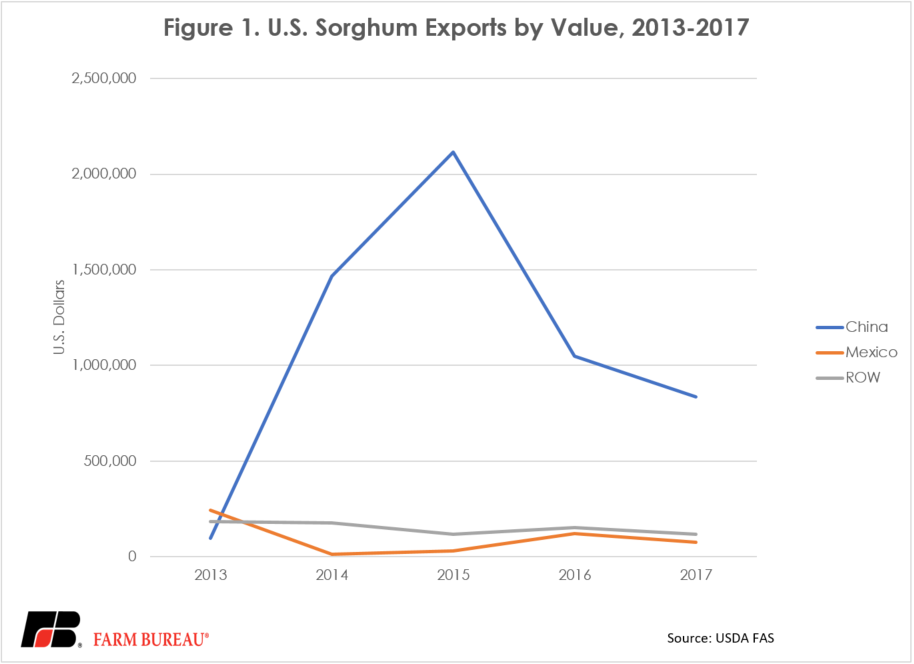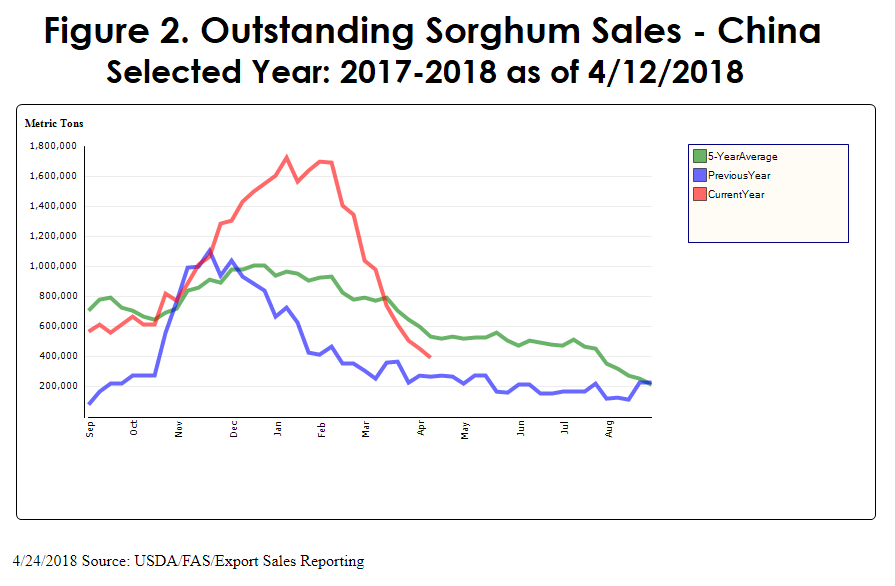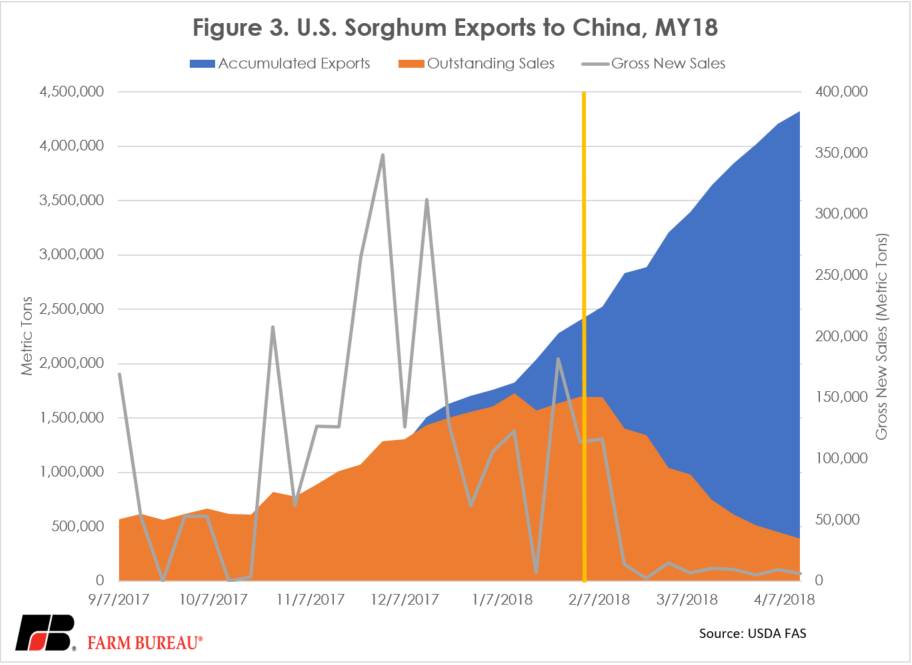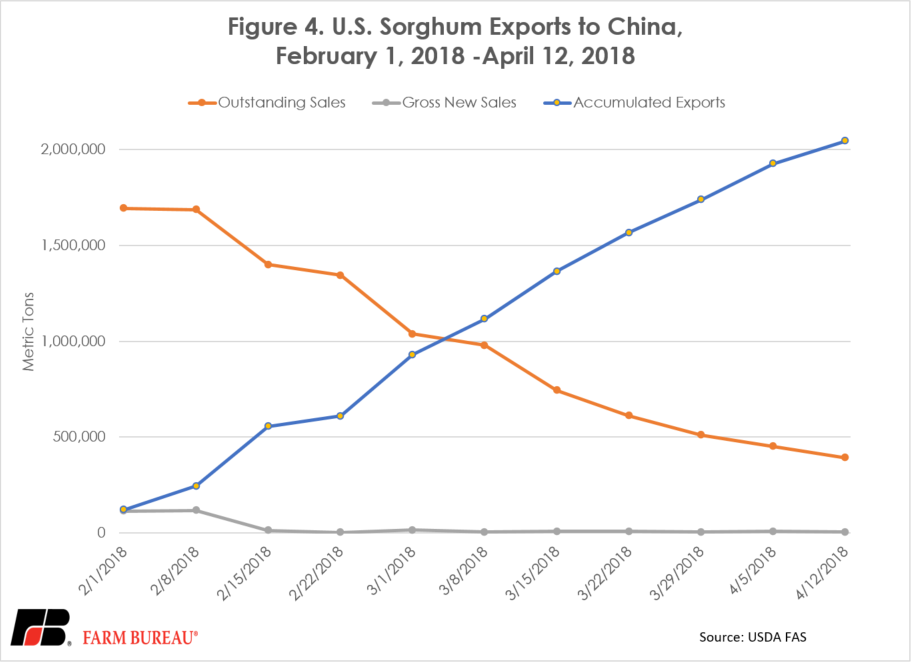In Sorghum Trade Words Count
TOPICS
Trade
photo credit: Getty
Veronica Nigh
Former AFBF Senior Economist
Any kindergarten teacher will tell their students that words matter, that they can hurt. It’s an important lesson that we learn early and carry with us throughout life. But words can hurt more than feelings. Words can hurt markets as well. The case of market year 2018 U.S. grain sorghum/milo exports to China prove that in trade affairs, words matter.
U.S. exports of grain sorghum to China over the last four years have been nothing short of a Cinderella story. In 2013, the U.S. exported a little more than $500 million worth of grain sorghum to the world. Mexico was our largest export destination, accounting for nearly 50 percent of grain sorghum exports that year. At that time, Mexico had been the largest export destination for at least the last five years. China, on the other hand, purchased almost $100 million in grain sorghum in 2013, accounting for nearly 20 percent of U.S. exports. This was the first time China had made any sizable imports of U.S. grain sorghum. We now know that in 2013 China was just dipping its toe in the water. The Chinese livestock sector was testing to see if U.S. grain sorghum could be part of their feeding regime. In 2014, U.S. grain sorghum growers received China’s message, loud and clear as China’s imports of U.S. grain sorghum soared to nearly $1.5 billion – 15 times what they had been just the year before. Since then, China has remained the dominant importer of U.S. grain sorghum, as highlighted in Figure 1.

The growth in sorghum exports over the last several years attracted not only the attention of U.S. sorghum producers, but also the attention of the Chinese government. Concerns about potential disruptions in the Chinese grain sorghum market began in 2017, when USDA Foreign Agricultural Service staff in Beijing began reporting growth in the domestic Chinese grain sorghum market. According to FAS staff, China was pulling back on corn subsidies that had pushed many Chinese farmers to favor corn over other crops. As corn plantings dropped, Chinese grain sorghum plantings increased. This, in turn, drove sorghum prices up and increased volume contracting for sorghum use for baijiu production. (Baijiu is a white distilled spirit that is a staple of Chinese banquets.) It is not unexpected that the Chinese government would want to protect a surging sector of agriculture and would see large imports from the United States as a threat to its success.
Worried that the Chinese government was going to make it more difficult or expensive to get grain sorghum from the U.S., Chinese buyers of U.S. sorghum went on a buying spree. As shown in Figure 2, outstanding contracts for U.S. grain sorghum soared in December through February, far outpacing the same months in the prior year and topping the five-year average. Buyers were eager to secure supplies and begin shipment before the Central Committee of the Communist Party of China and the State Council unveiled the No. 1 Document on Feb. 4, 2018. The No. 1 Document traditionally focuses on agricultural and rural issues and is considered to be a significant policy document that outlines goals for the upcoming year.

On February 4, when Document No. 1’s Feb. 4 release was accompanied by an announcement by the Chinese government that is was launching anti-dumping and countervailing duty investigations on U.S. grain sorghum - proving their concerns about changes to policy were well founded. The yellow line on Figure 3 represents the Feb. 4 announcement. What we see in this figure is exactly what we’d expect – physical deliveries skyrocketed, while gross new sales fell basically to zero. Figure 4 focuses on the dates of Feb. 1 – April 26, 2018, to further draw attention to the dramatic shift in exports and sales after the Feb. 4 announcement. Clearly, Chinese importers were paying attention not only to the actions, but the words of the Chinese government.


On April 17, the Chinese government announced its investigation had indeed concluded that U.S. grain sorghum was unfairly subsidized. As a result, U.S. grain sorghum imports would immediately be subject to 179 percent duties upon entry. Within hours it was reported that five ships carrying 1.2 million tons of sorghum had changed course and it seems unlikely the remaining outstanding sales will result in actual delivery. The loss of this important market is devastating for U.S. sorghum growers. It drives home that real people’s livelihoods are at stake in these times when trade rhetoric and action is particularly heated.
Top Issues
VIEW ALL